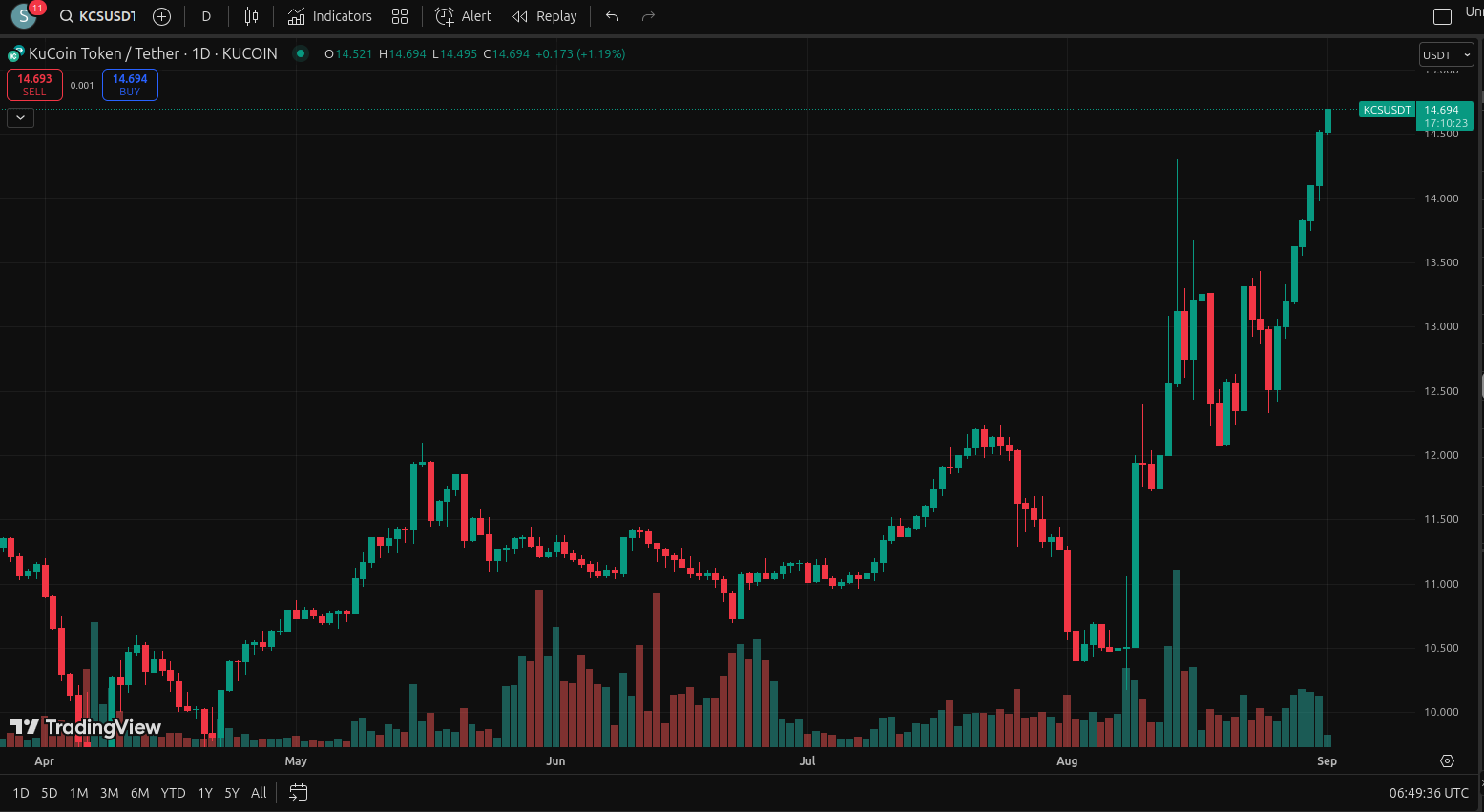KuCoin (KCS) is currently trading at approximately $14.69, with signs of sustained strength and momentum in recent days.

A newly launched loyalty program is offering tiered benefits—like up to 22% trading fee discounts, cashback via KuCard, and access to exclusive features—boosting demand and encouraging users to hold KCS. KuCoin is also introducing new mining products and platform innovations, adding further appealing utility and encouraging participation.
Regular token burns—most recently tens of thousands of KCS removed from circulation—are trimming supply, reinforcing scarcity and price support.
KuCoin’s “Trust Project,” featuring AAA security ratings, ISO 27001 certification, transparent reserve audits, and delisting of poor-performing tokens, boosts credibility for the platform—and by extension, its native token.
KCS is in a 7-day uptrend and breaking key resistance around $14.36. Indicators show overbought RSI and rising MACD, suggesting bullish momentum—though caution for short-term retracements applies. Analysts point to upcoming resistance targets near $15.73–$18.91 but highlight the risk of profit-taking if KCS closes below key support around $13.50–$14.00.
Announcements from KuCoin leadership highlighting the token’s rally helped fuel attention, driving KCS into the list of top gainers among large-cap cryptos.
| Indicator | Status |
|---|---|
| Momentum | Strong 7-day uptrend, new highs |
| RSI | Hovering in overbought territory |
| MACD | Bullish crossover, rising bars |
| Support Levels | ~$14.00 followed by ~$13.10 |
| Resistance | Immediate: ~$15.97; extension: ~$18+ |
Technical patterns suggest bullish continuation—provided catalytic events persist or demand holds above support zones. That said, overbought signals mean a cautious eye on potential pullbacks.
KuCoin Token is on a notable bullish trajectory, supported by strategic platform-driven demand, deflationary mechanics, growing credibility, and technical strength. While near-term overbought conditions suggest caution, the long-term outlook remains positive—particularly if supply continues tightening and ecosystem utility expands.